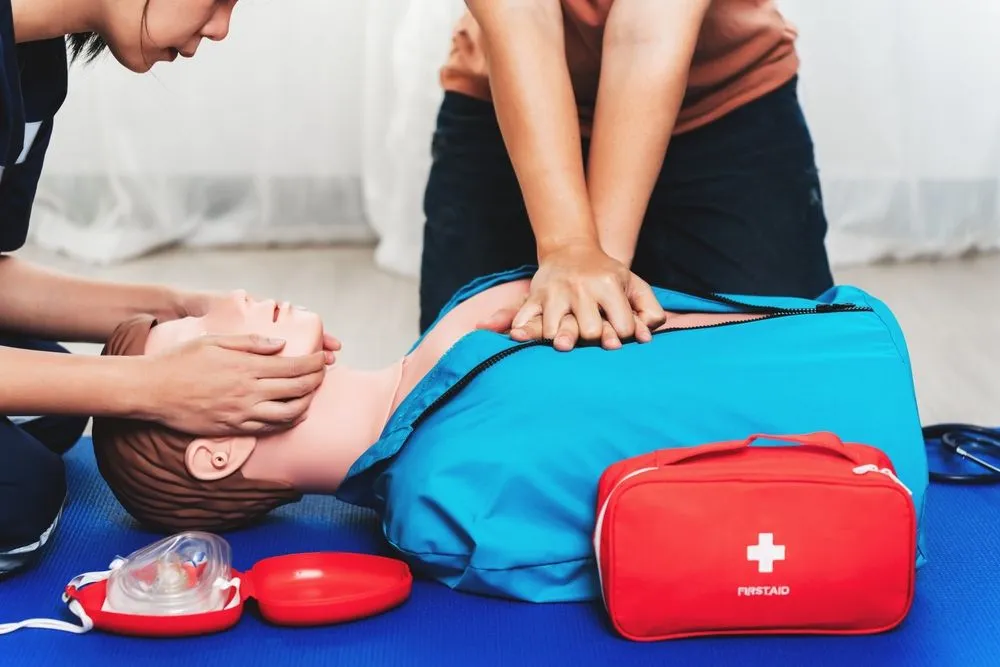Understanding when an organisation is legally required to have an accident book is essential, not just for compliance, but also for creating a safer work environment. Businesses with 10 or more employees in the UK must keep an accident book to document injuries.
Even if your team is small, tracking any workplace injuries or incidents is essential for ensuring safety and complying with regulations. Having a clear record helps meet legal requirements and improve overall workplace safety and support your employees’ well-being.

Why Every Workplace Needs an Accident Book and How It Helps
An accident book is an essential record that employers and employees use to document injuries, illnesses, or incidents at work. It ensures legal compliance, helps track safety trends, and is crucial in investigating how incidents occur.
By identifying unsafe practices, the accident book aids in preventing future accidents and reducing workplace risks. Whether it’s a first aid accident book or a standard accident report book, keeping accurate records supports both safety and compliance.
Accident Book Legal Requirements in the UK (SSCPR & RIDDOR)
The accident book legal requirement in the UK is set out under SSCPR, and further reporting duties come under RIDDOR. If your organisation has 10 or more employees, the law requires you to keep an accident book under the Social Security (Claims and Payments) Regulations 1979 (SSCPR).
You also need to follow RIDDOR 2013 (Reporting of Injuries, Diseases, and Dangerous Occurrences Regulations), which means reporting certain serious incidents to the Health and Safety Executive (HSE).
While both SSCPR and RIDDOR aim to protect employees and keep your workplace compliant, SSCPR focuses on record-keeping, and RIDDOR focuses on reporting specific types of incidents.
Key Requirements for Employers to Keep an Accident Book
Employers must understand what should be recorded in an accident book to stay compliant and protect staff from future risks. Here’s a breakdown of the essential information you need to know about maintaining an accident book:
Requirements | Details |
Who must keep an accident book? | Employers with 10 or more employees working on the same premises and owners or occupiers of mines, quarries, or premises covered by the Factories Act 1961. |
What must be recorded? | Any accident that causes personal injury to an employee must be recorded. The injured person or someone on their behalf can make the entry. |
How should the records be kept? | The accident book must be in a format approved by the Secretary of State and readily accessible. |
How long should the records be kept? | Once the accident book is complete, it must be preserved for at least 3 years from the date of the last entry. |
Essential Details to Record in an Accident Book
The injured party should fill in the accident details; however, under Regulation 25(3) of the SSCPR, someone acting on their behalf can also complete the record. The accident book should include the following information:
- Date and Time: The exact moment the incident occurred.
- Injured Person’s Name: The full name of the individual involved.
- Accident Description: A brief account of what happened.
- Injury Type: The specific nature of the injury sustained.
- Witnesses: Names and contact details of any individuals who witnessed the incident.
- Medical Treatment: Any medical care or treatment provided to the injured party.
- Further Actions: Any follow-up actions, such as investigations or safety measures.
Physical vs. Digital: Which Accident Book Format is Required?
Whether you keep a digital or physical accident book at work, it must be accessible and secure. While a physical book is often easier to access quickly, a digital version may pose challenges, such as login barriers or unfamiliarity with the system for the person reporting the incident. There’s also a risk of losing or accidentally deleting digital records, which could compromise important information.
Ultimately, the choice between a physical or digital format depends on your workplace’s needs and preferences, but it should always prioritise safety, accessibility, and efficiency.
Conclusion
Accident books are vital in maintaining workplace safety and ensuring legal compliance. Whether in physical or digital format, they must be accessible and accurately maintained. Coupled with first aid awareness, this simple tool can help protect employees, meet legal responsibilities, and support a safer working environment.
Frequently Asked Questions
Who is responsible for filling in the accident book?
The injured employee or a witness usually fills in the accident book. Employers must ensure it’s accessible and properly maintained.
How long do you have to put an accident in the accident book?
Accidents should be recorded as soon as possible after they occur. Records must be kept for at least three years from the date of the last entry.
Where must first aid incidents be recorded?
Employers should ensure that first aid incidents are recorded in the accident book as required.
What should be recorded in an accident book?
Key details include the incident’s date, time, and location, names of those involved, injury details, and any treatment given.
Explore Popular First Aid Courses at Hurak
Looking to boost your skills? Explore our range of first aid courses to find the right one for you.
Here are some of our most popular first aid courses to help you stay prepared:
- Emergency First Aid at Work (1 Day): A one-day course covering essential life-saving skills, including CPR, choking, bleeding control, and managing emergencies. Ideal for low-risk workplaces.
- First Aid at Work (3 Days): A comprehensive three-day training that prepares you to respond to a wide range of injuries and illnesses in the workplace. Meets HSE requirements for high-risk environments.
- Basic First Aid Course: Perfect for general awareness. It covers basic skills like dealing with minor wounds, burns, shock, and fainting and is suitable for non-workplace settings.
- Advanced First Aid Training: Intended for those needing higher-level skills. Includes oxygen administration, advanced trauma management, and secondary assessments.
- First Aid for Mental Health: Focuses on identifying, understanding, and supporting individuals with mental health conditions. Covers stress, anxiety, depression, and early intervention strategies.





